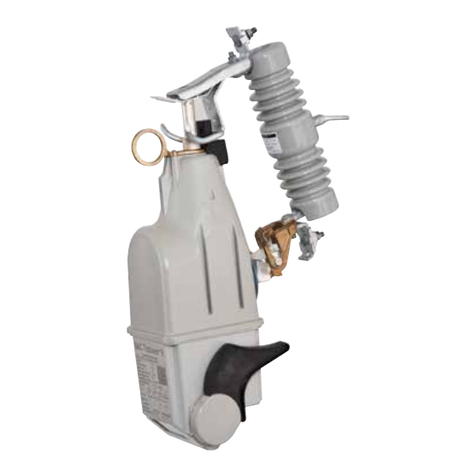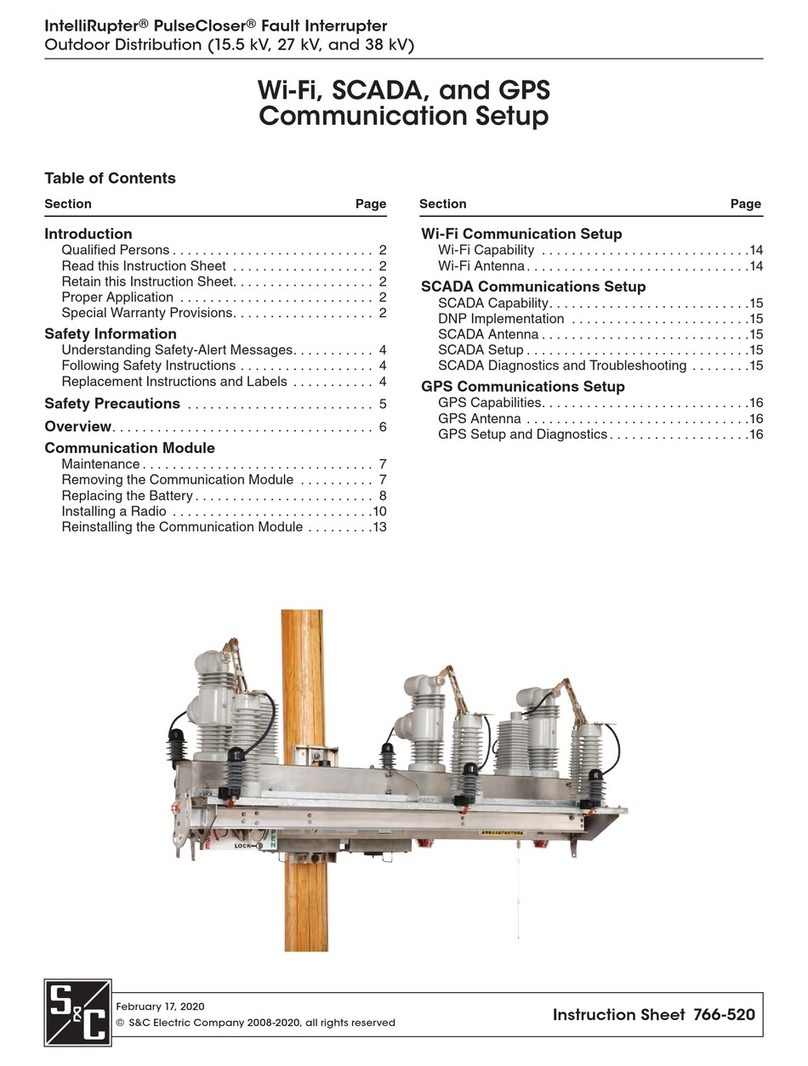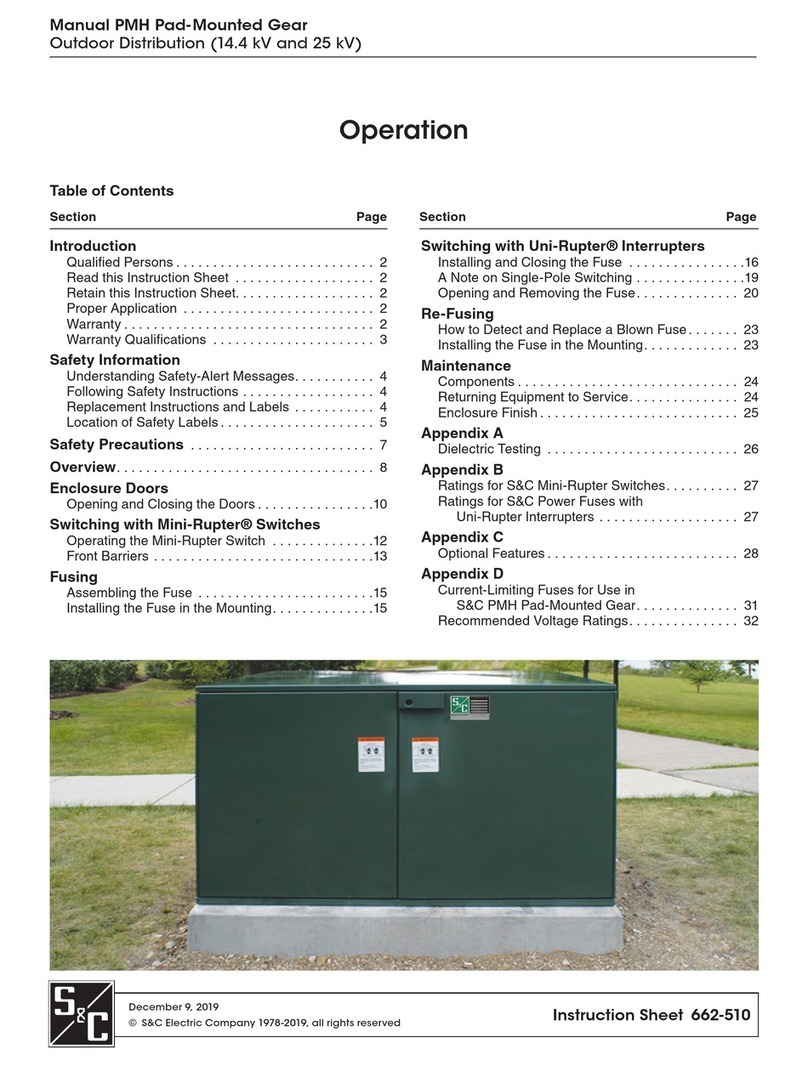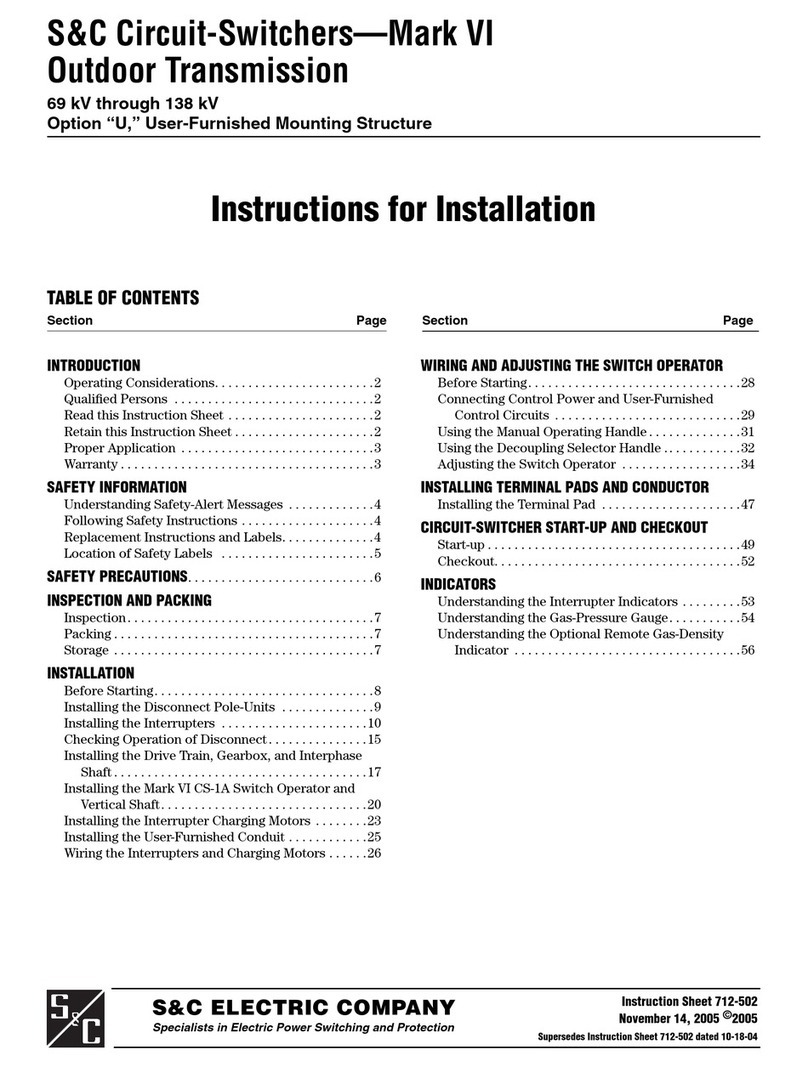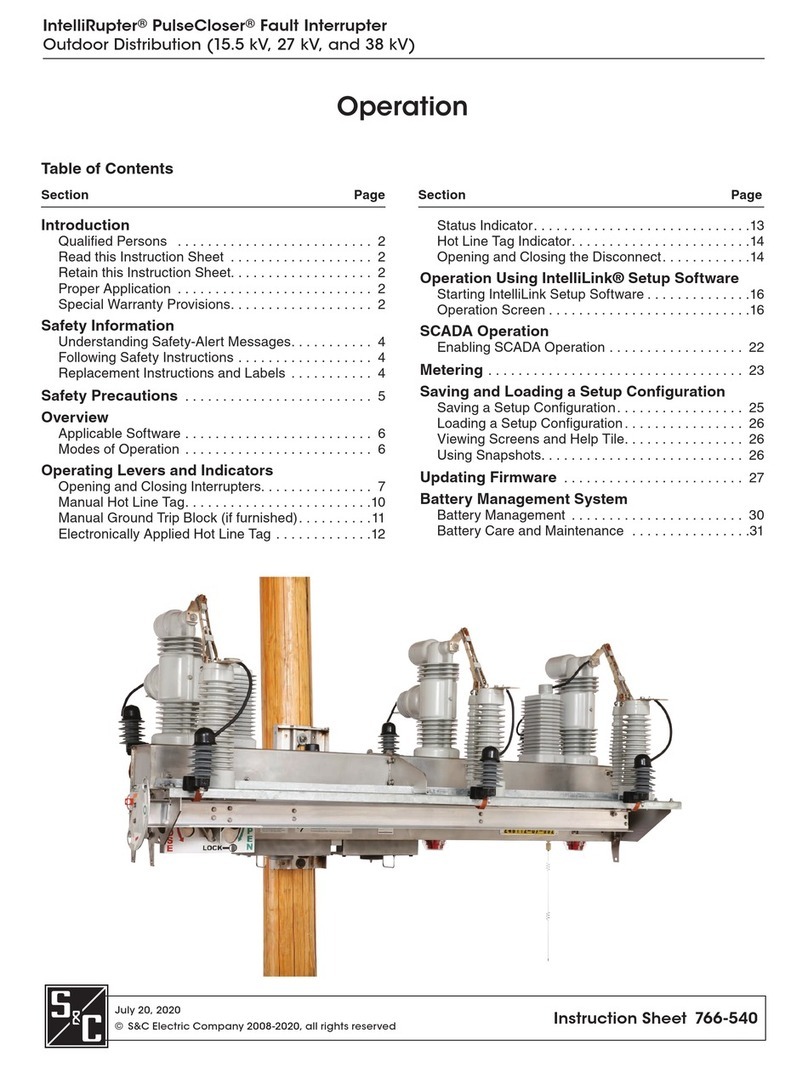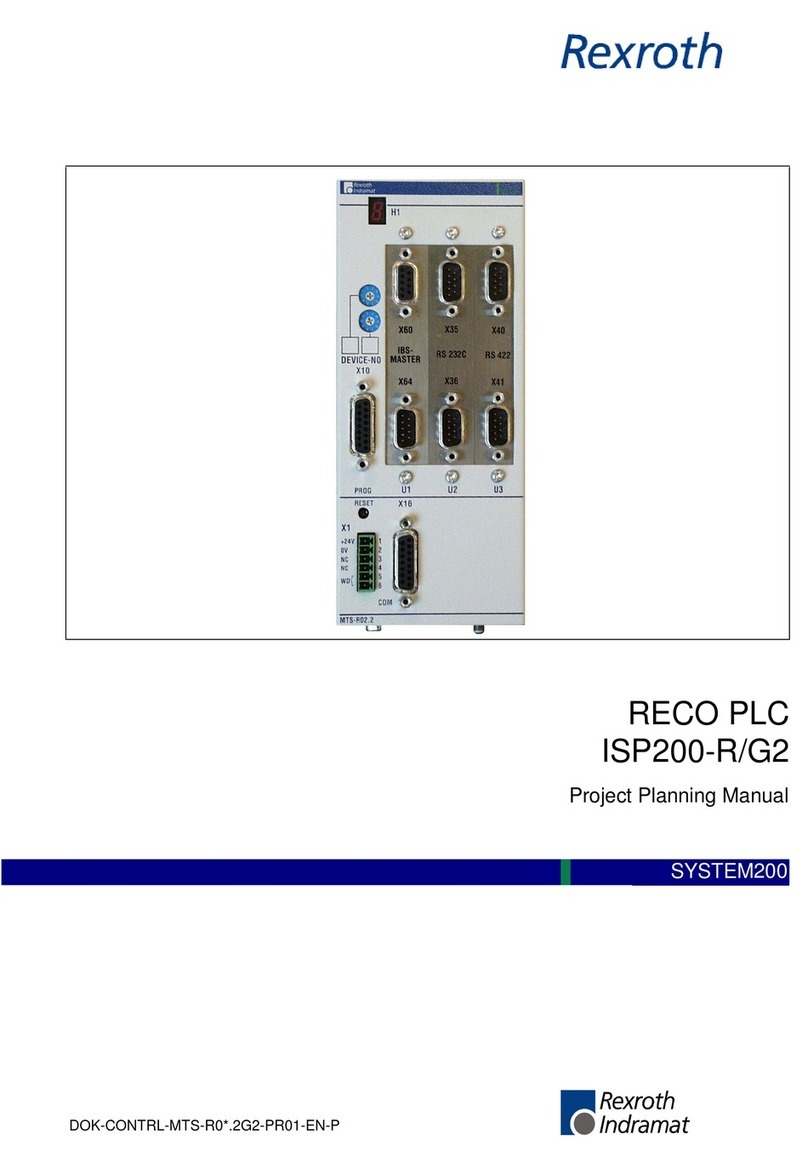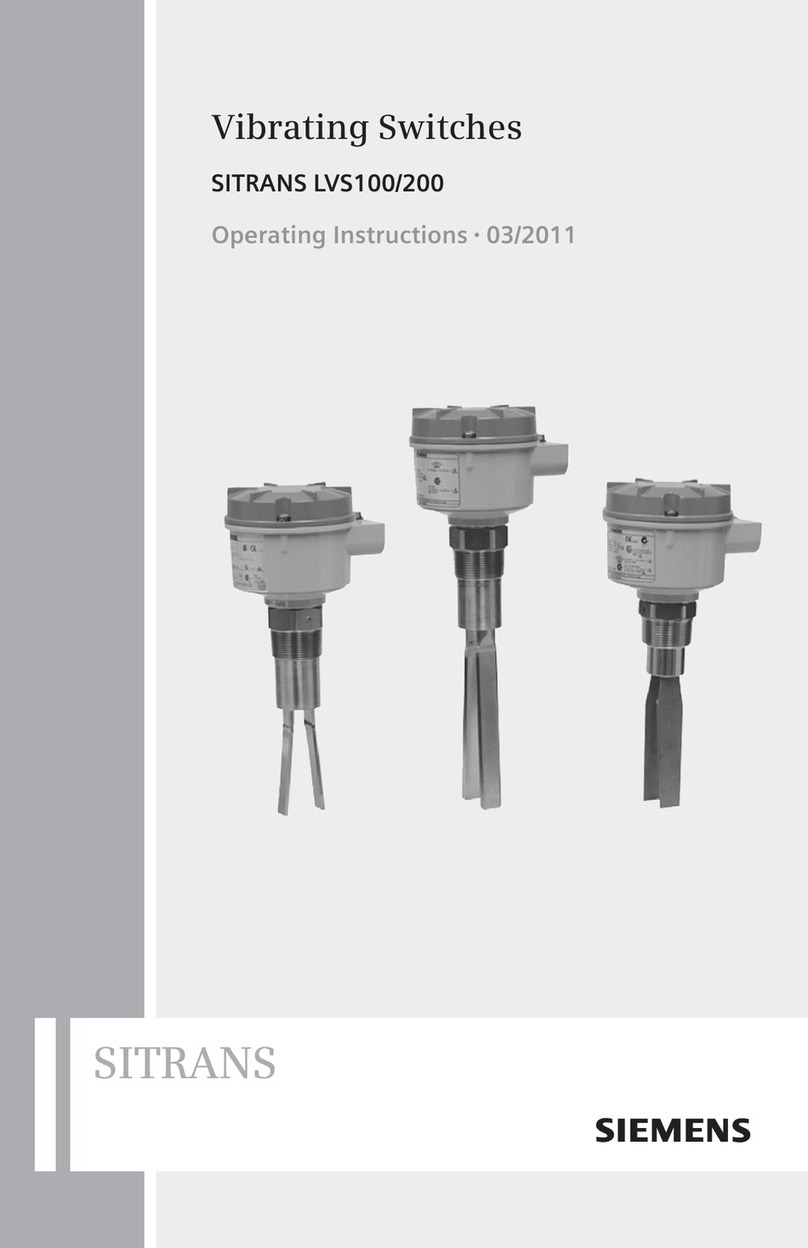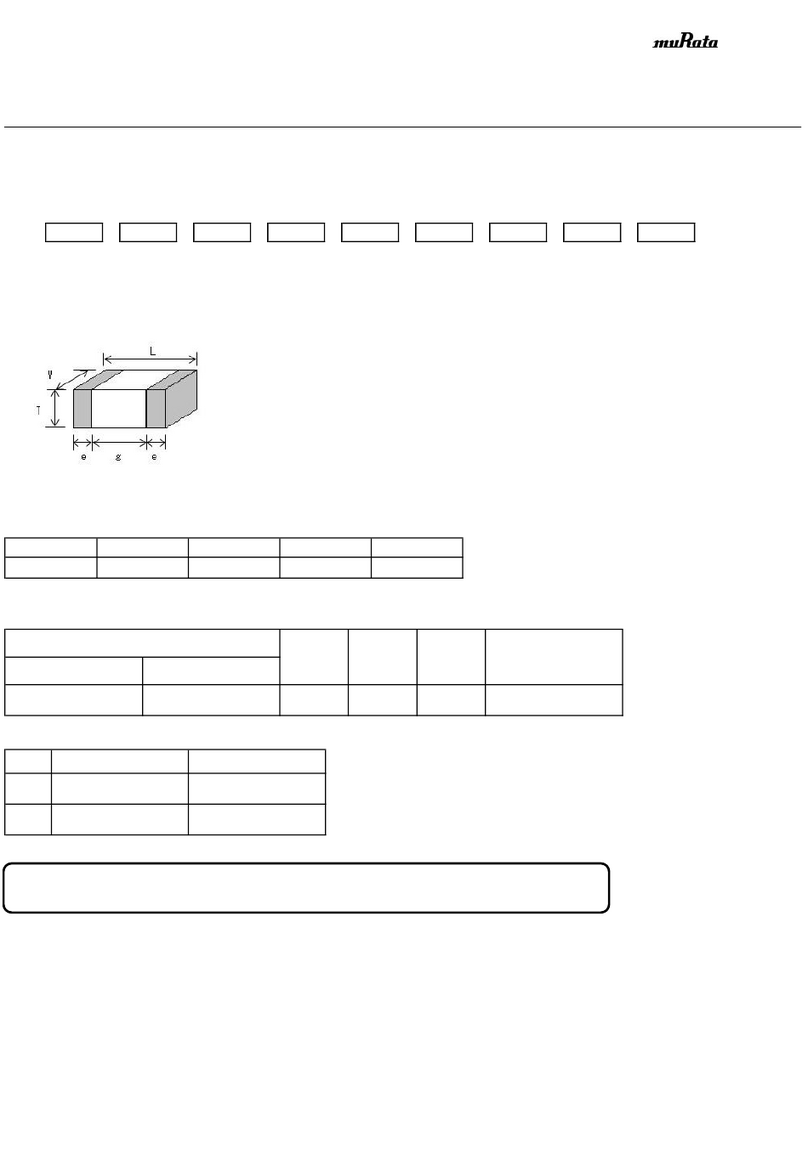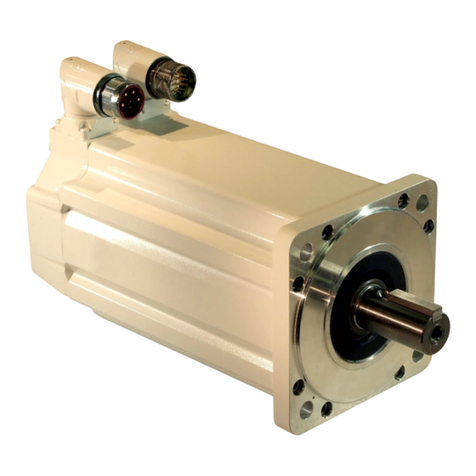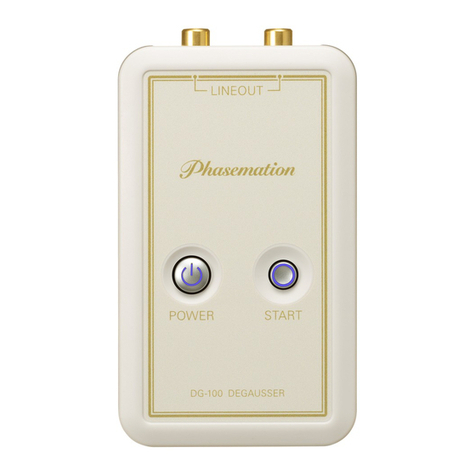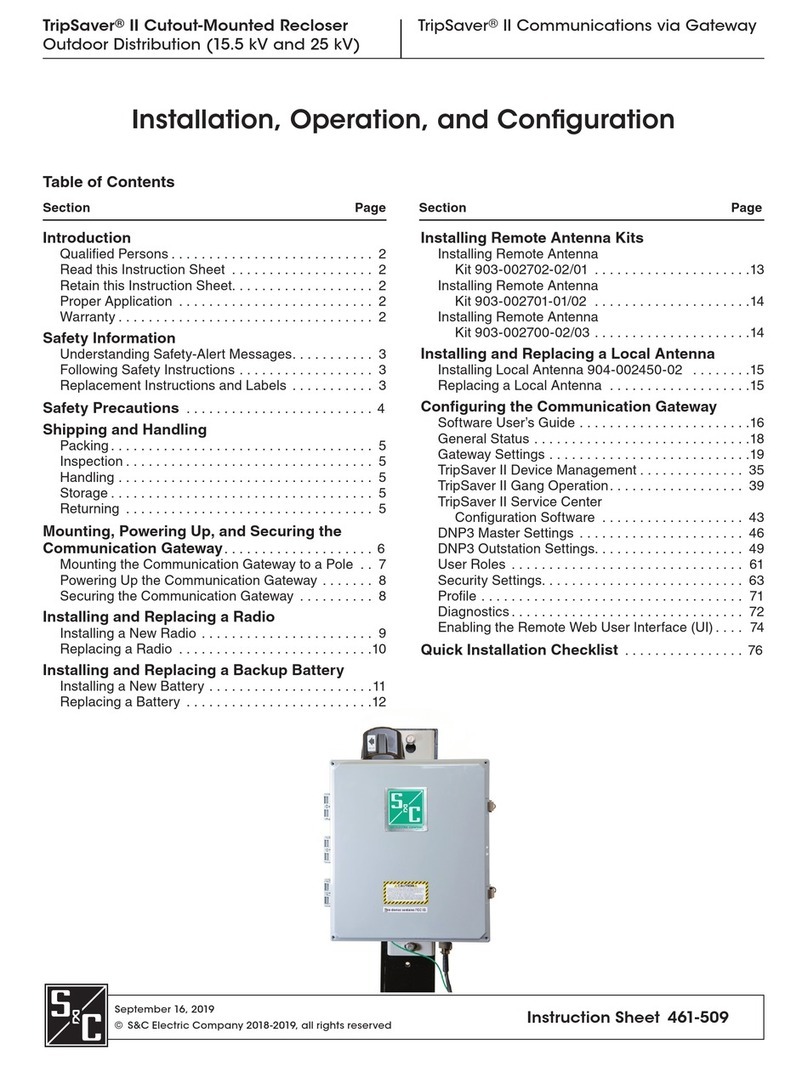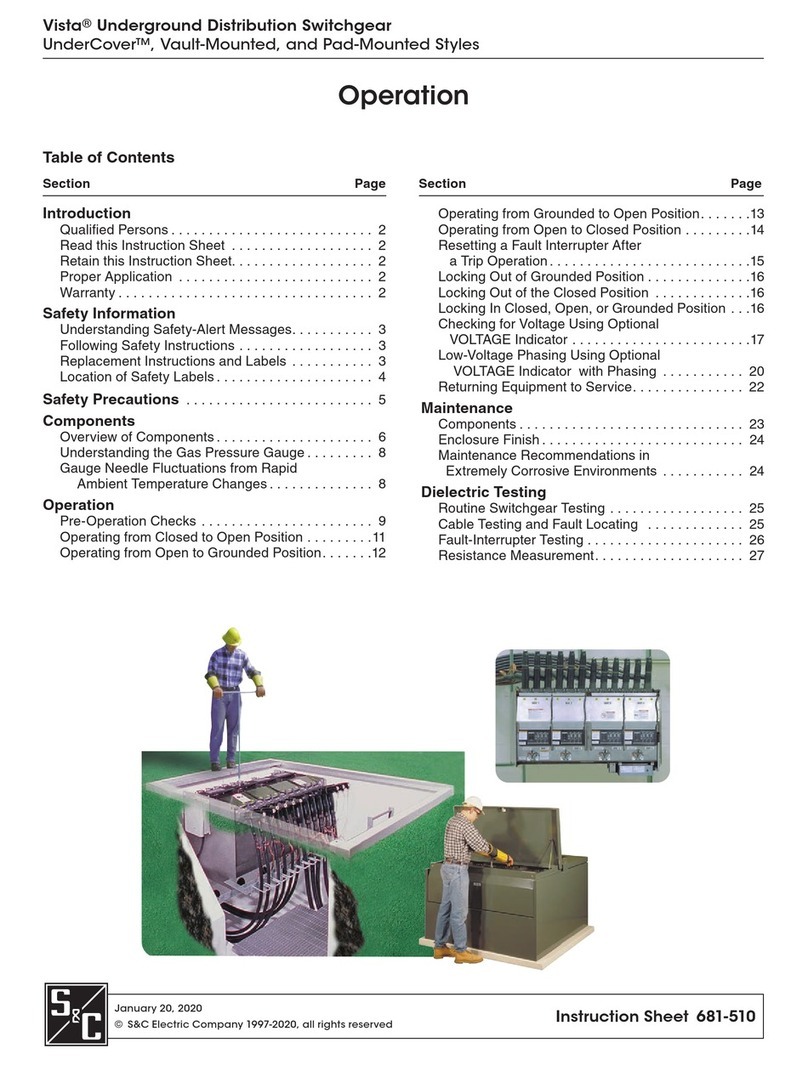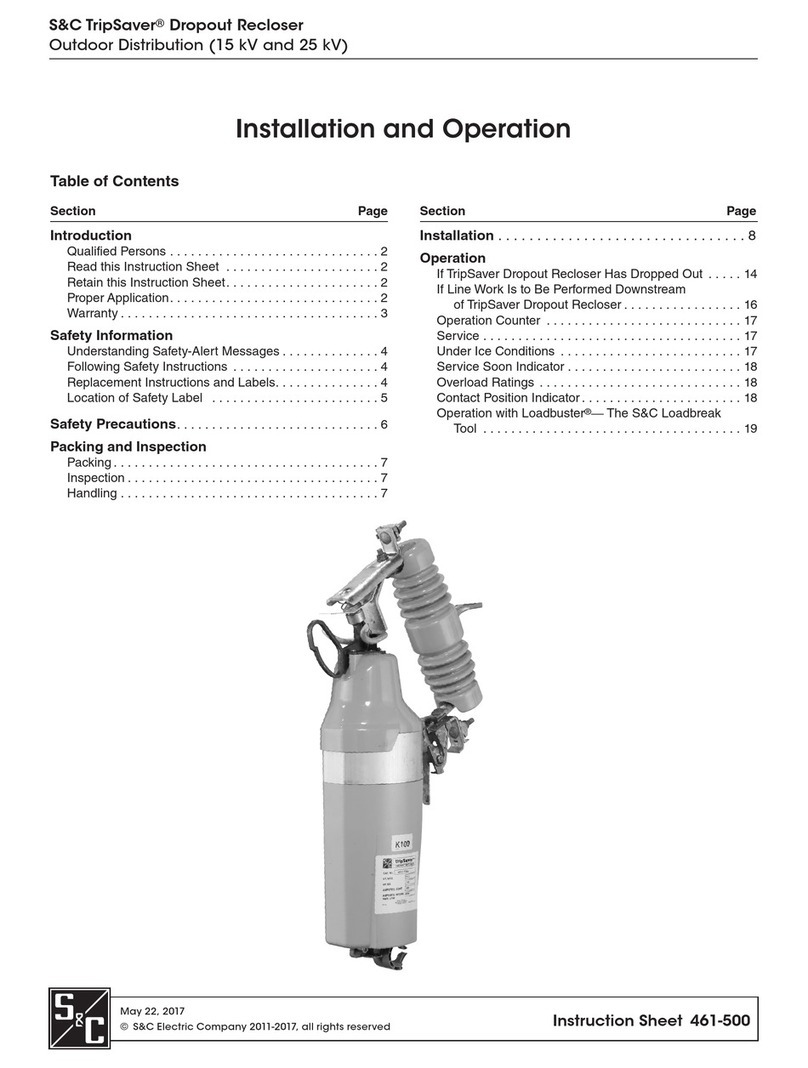
TripSaver®II Cutout-Mounted Recloser
Outdoor Distribution (15.5 kV, 25 kV)
TripSaver®II Communications
via Gateway
January 17, 2022
© S&C Electric Company 2018-2022, all rights reserved Instruction Sheet 461-509
Installation, Operation, and Conguration
Table of Contents
Section Page Section Page
Introduction
Qualified Persons ........................... 2
Read this Instruction Sheet ................... 2
Retain this Instruction Sheet. . . . . . . . . . . . . . . . . . . 2
Video..................................... 2
Proper Application .......................... 2
Warranty .................................. 3
Safety Information
Understanding Safety-Alert Messages........... 4
Following Safety Instructions .................. 4
Replacement Instructions and Labels ........... 4
Location of Safety Labels ..................... 5
Safety Precautions ......................... 6
Shipping and Handling
Packing ................................... 7
Inspection ................................. 7
Handling .................................. 7
Storage ................................... 7
Returning ................................. 7
Mounting, Powering, and Securing the
Communications Gateway................... 8
Mounting the Communications
Gateway to a Pole ........................ 9
Powering the Communications Gateway ........ 10
Securing the Communications Gateway ........ 11
Installing and Replacing a Radio
Installing a New Radio ...................... 12
Replacing a Radio ......................... 13
Installing and Replacing a Backup Battery
Installing a New Battery ..................... 14
Replacing a Battery ........................ 15
Installing Remote Antenna Kits
Installing Remote Antenna
Kit 903-002702-02/01 .................... 16
Installing Remote Antenna
Kit 903-002701-01/02 .................... 17
Installing Remote Antenna
Kit 903-002700-02/03 .................... 17
Installing and Replacing a Local Antenna
Installing Local Antenna 904-002450-02 ....... 18
Replacing a Local Antenna .................. 18
Configuring the Communications Gateway
Software User’s Guide ...................... 19
General Status ............................ 23
Gateway Settings .......................... 24
Device Management........................ 45
TripSaver®II Service Center
Configuration Software ................... 47
Remote Drop Open......................... 49
Gang/Local Operation ...................... 52
DNP3 Master Settings ...................... 56
DNP3 Outstation Settings. . . . . . . . . . . . . . . . . . . . 58
User Roles ............................... 68
Security Settings. . . . . . . . . . . . . . . . . . . . . . . . . . . 70
Profile ................................... 75
Diagnostics ............................... 76
Commissioning (Pairing) a TripSaverII
Recloser for Use with the Communications
Gateway
Service Center Pairing a TripSaverII Recloser with
Firmware Version 1.8 or 1.9 ................ 78
Field Pairing a TripSaverII Recloser
with Firmware Version 1.6 or 1.7
Installed on the Utility Pole and
Powered by Line Current .................. 79
Troubleshooting
Signal Interference ..........................81
Pairing Process Takes Longer Than Expected ....81
Quick Installation Checklist ................ 82
Appendix A
Interface Pinouts........................... 83
Power System Diagram ..................... 84
Understanding the Radio Mode ............... 85
Gateway Controller Module Indicator Lights...... 87
Appendix B
Regulatory Information ...................... 88

